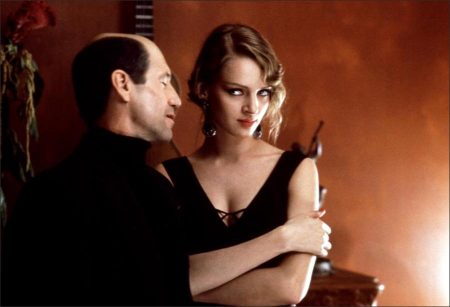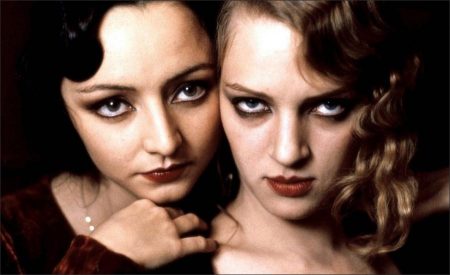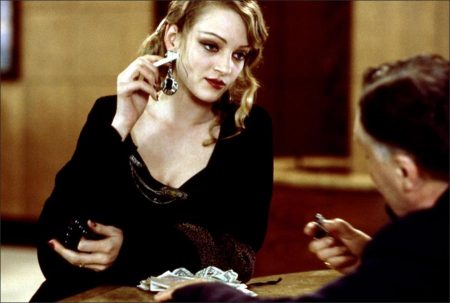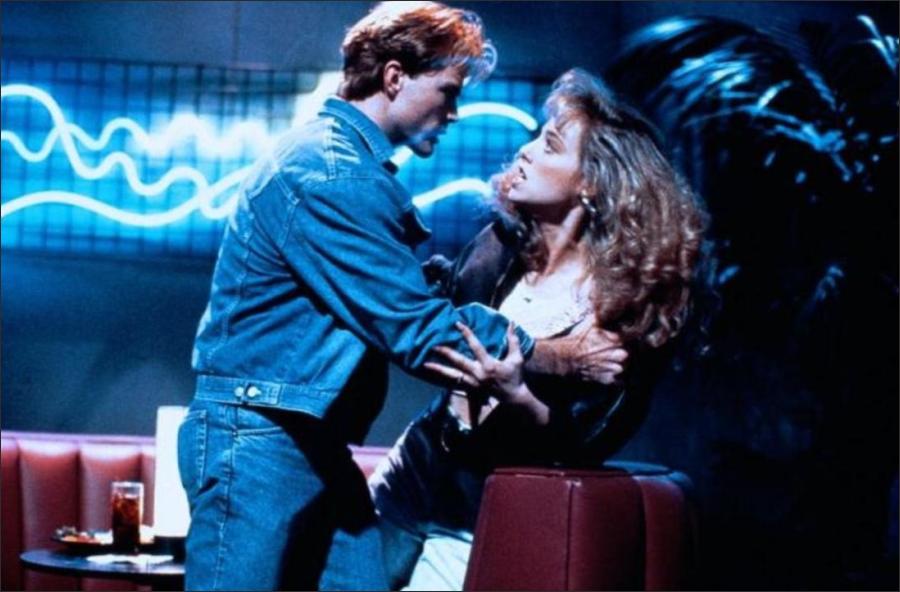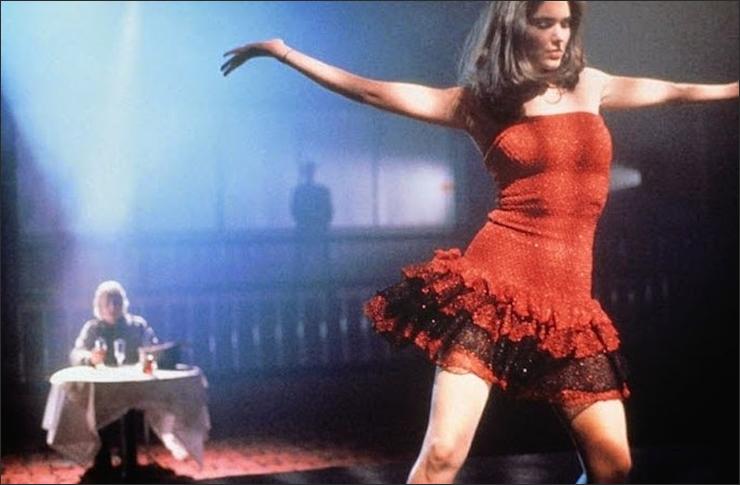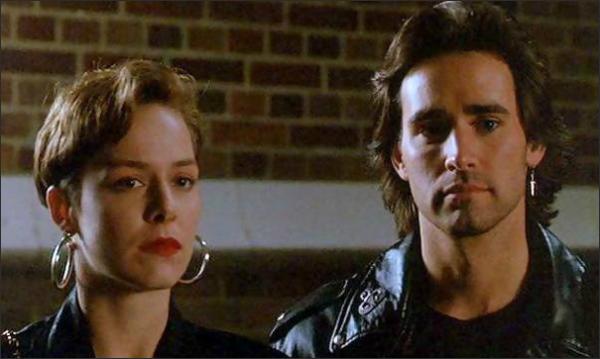Henry and June Movie Trailer. Of the two loud literary voices to be heard in ”Henry and June,” Philip Kaufman’s long, steamy and untethered account of the three-way romance involving the novelist Henry Miller, his wife, June, and the compulsive diarist Anais Nin, it is Nin’s that emerges more clearly. The raw, reckless immediacy of Miller’s work has been overpowered by Nin’s more passionately overheated style.
Nin’s posthumously published diary describing her intense attachment to both of the Millers is the basis for the film’s screenplay by Mr. Kaufman and his wife, Rose. (Their son Peter is the film’s producer, which makes for one highly unusual family undertaking.) That alone is not enough to account for the dominance of Nin’s point of view.
The film is also deeply in harmony with her thoughts at their most fulsome and hyperbolic, with her self-aggrandizing assessments, and with her idealistic embrace of sexual liberation as the pursuit of truth. Though ”Henry and June” is set in Paris (in the early 1930’s), its attitudes would be equally at home on many a college campus, circa freshman year.
As with Mr. Kaufman’s earlier ”Unbearable Lightness of Being,” this film brings together a brilliant, rakish man, a small and demure woman, and a bombshell. The first two, in this case, are Henry (Fred Ward) and Anais (Maria de Medeiros), who meet by chance and are instantly attracted to each other’s ideas. ”I’d love to read something he’s written,” Anais muses after this encounter. ”Fat chance – he’ll never get published,” says a not very prescient companion.
Nin initially appears as a tremulous young writer about to discover the subject that would consume her forever after. Marveling at a cache of quaint pornographic photos, she declares breathlessly: ”In that closet I became familiar with the endless varieties of erotic experience.” The film presents those varieties as indeed endless, but it invests very little drama in who happens to be doing what to whom. The characters’ sexual abandon is so complete that it robs the story of any shape.
Anais eventually expands her fascination with Henry to include the towering, voluptuous June (Uma Thurman). ”June appeared like an angel,” she says. ”I offered her a fool’s faith.” Somewhere in the background as all this transpires is the patient Hugo (Richard E. Grant), the dim, stodgy husband who addresses Anais as Pussywillow.
The screenplay emphasizes Anais’s enduring attraction to her husband. But the film undermines that by presenting him as a fool, at one point staging the kind of wild cinematic bacchanal in which the actors cavort wearing carnival masks and blue body paint. In the midst of this revelry, Hugo seduces his own wife while wearing headgear that makes him look like an owl. She takes him seriously, but the audience will not.
Meanwhile, Henry and Anais roam the cafes of Paris declaiming about ”literature as we know it, poetry as we know it” and generally testing their own daring. They make love strenuously beneath a bridge by the Seine. They spend time with Brassai, who takes pictures in a whorehouse. Magicians do tricks. Accordions play. And Henry and Anais talk fervently about their own writing. ”Just read your goddamn book about D. H. Lawrence, and my, oh, my, it’s one helluva book, Miss Nin,” Henry says.
Mr. Ward delivers lines like this with rascally fervor, but his is essentially an unplayable role. With his head shaved distractingly to simulate Miller’s baldness, and with a screenplay that has him exhorting friends to read Spengler and Thomas Mann, Mr. Ward is asked to give more of an impersonation than a performance; still, he is always appealing. Miss de Medeiros, a photogenic actress who resembles Nin, is mostly called upon to let the camera study her huge, soulful eyes and brave little chin. Ms. Thurman, as the Brooklyn-accented June, takes a larger-than-life character and makes her even bigger, though the performance is often as curious as it is commanding. It says a lot about the film’s posturing that Count Bruga, the sinister-looking little male marionette that June Miller really did carry with her as a kind of conversational prop, seems no more excessive here than anything else.
The film’s sex scenes, photographed delicately by Philippe Rousselot and directed with great intensity by Mr. Kaufman, are particularly lofty. These sequences, often tinged with symbolism (a hand playing a guitar juxtaposed with a hand on a woman’s breast), tend to be self-consciously bold. But they are also crucial, since the film’s only real drama, indeed its only real story, hinges upon Anais’s awakening attraction to June.
Even this is presented with excessive weight. An extended bit of foreshadowing finds Anais and Hugo uneasily visiting a bordello and paying to watch a sexual demonstration involving two women. Though the episode is elaborately staged and actually has some narrative purpose, it lacks the fire and candor to which any film about Henry Miller presumably aspires. Nothing about ”Henry and June” is as daring as that.
Henry and June (1990)
Directed by: Philip Kaufman
Starring: Fred Ward, Uma Thurman, Maria de Medeiros, Richard E. Grant, Kevin Spacey, Jean-Philippe Écoffey, Bruce Myers, Juan Luis Buñuel, Artus de Penguern, Alexandre De Gall
Screenplay by: Philip Kaufman, Rose Kaufman
Production Design by: Guy-Claude François
Cinematography by: Philippe Rousselot
Film Editing by: Dede Allen, Vivien Hillgrove, William S. Scharf
Costume Design by: Yvonne Sassinot de Nesle
Art Direction by: Thierry François
Music by: Mark Adler
Distributed by: Universal Pictures
Release Date: October 5, 1990
Hits: 217
